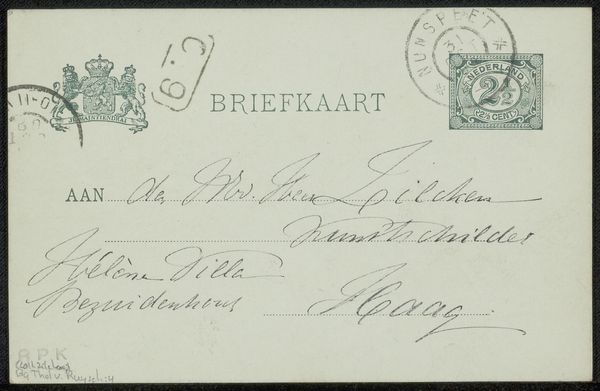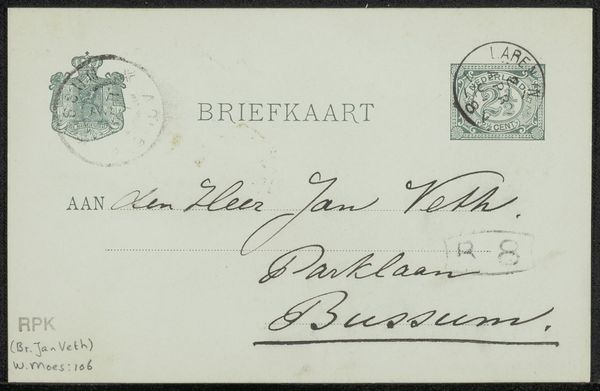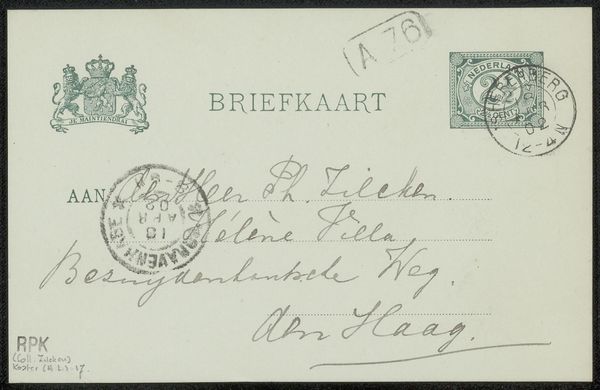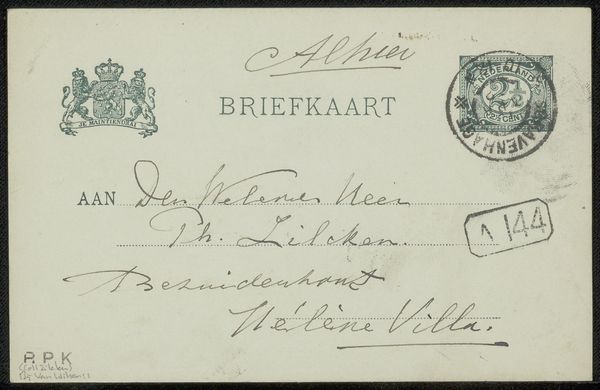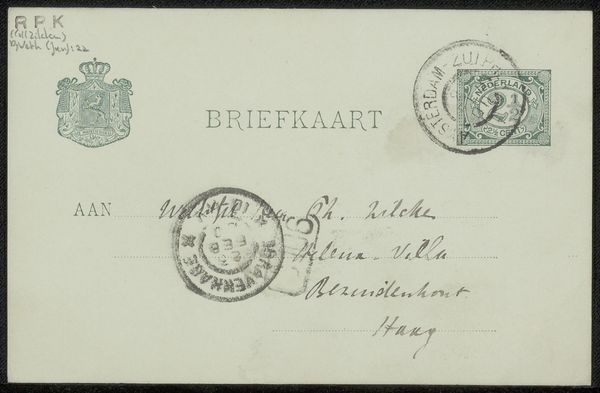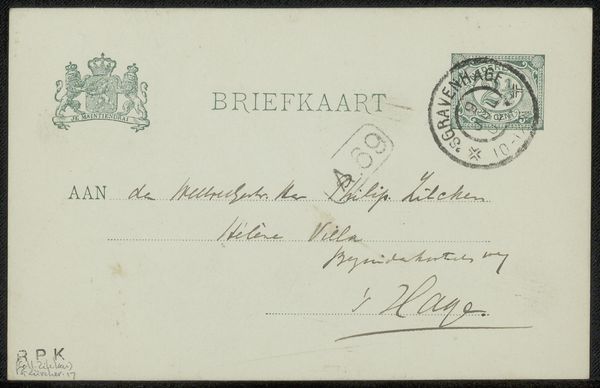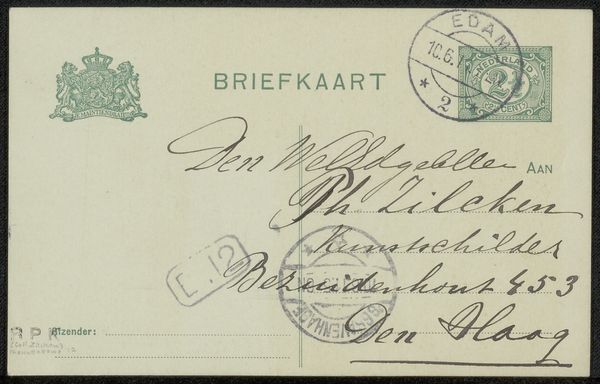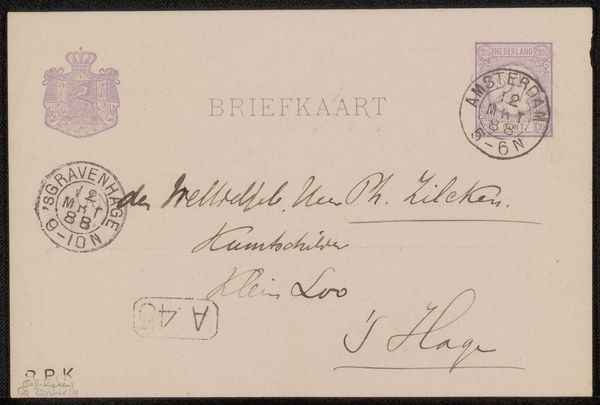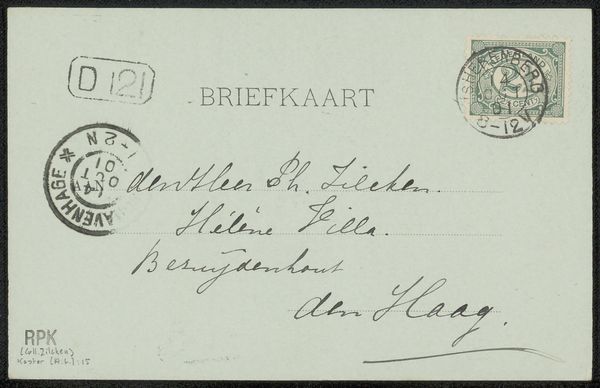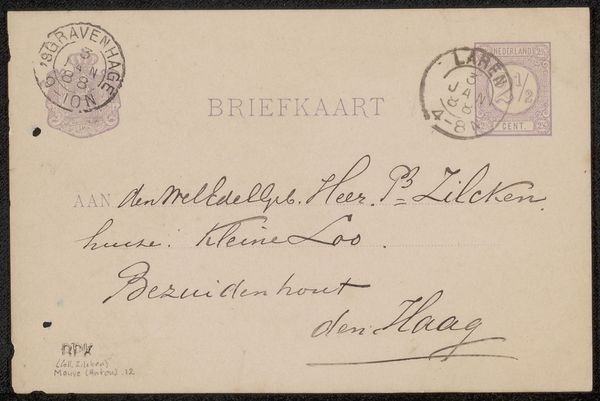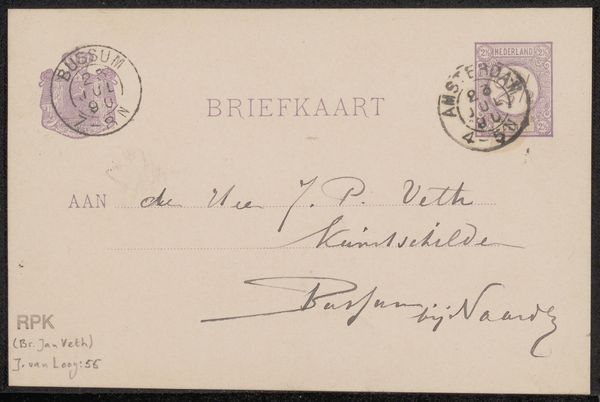
drawing, paper, ink, pen
#
portrait
#
drawing
#
pen drawing
#
paper
#
ink
#
pen
#
calligraphy
Copyright: Rijks Museum: Open Domain
Editor: So, here we have a "Briefkaart aan Philip Zilcken," which translates to "Postcard to Philip Zilcken." It's a pen and ink drawing on paper by Johan Thorn Prikker, dated before 1899. The script has such personality! It makes me think about interpersonal communication at that time, when there weren't phones and you depended on mail. What do you see when you look at this postcard? Curator: Absolutely. Seeing this, I'm immediately drawn to the act of communication itself – the deliberate, physical act of writing and sending a message. Before instant communication, such gestures held weight. Consider the power dynamics at play: Who was Prikker to Zilcken? What social circles did they inhabit? This postcard becomes a fragile document hinting at these relationships. Editor: That's a great point about the social dynamics. So you're suggesting we consider how the simple act of sending a postcard can become a rich social and historical artifact? Curator: Exactly. The stylistic choices – the flourishes in the handwriting, even the type of ink used – these could all be indicators of status, education, or artistic inclination. What does this careful script and chosen stationery tell us about the sender's intention? We can also view it within the context of the Arts and Crafts movement; how does the careful attention to design intersect with ideas about the value of labor, expression, and accessibility? Editor: I hadn’t thought of it like that – like an artifact representing the social and artistic movements of the period! Curator: Precisely. What appears on the surface to be a simple message might tell us more about social structure, gender expression, artistic integrity, and cultural identity than we might first think. Editor: Wow, that really opens up my understanding. I’ll definitely look at postcards differently now! Thank you.
Comments
No comments
Be the first to comment and join the conversation on the ultimate creative platform.
